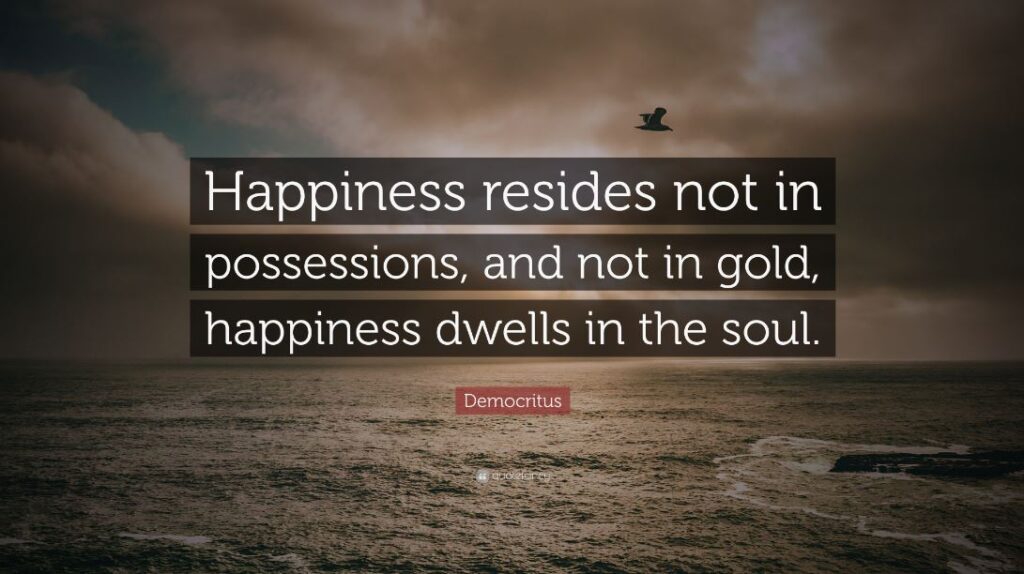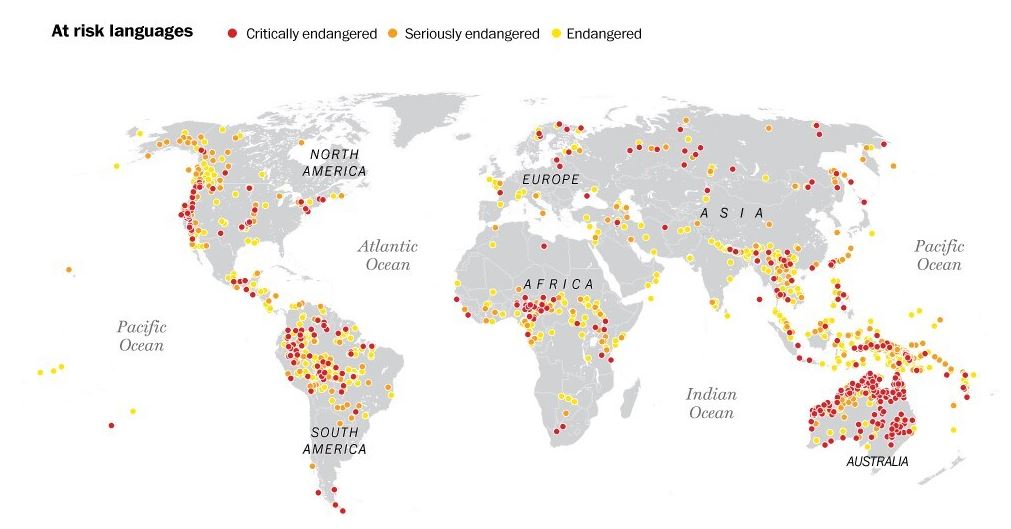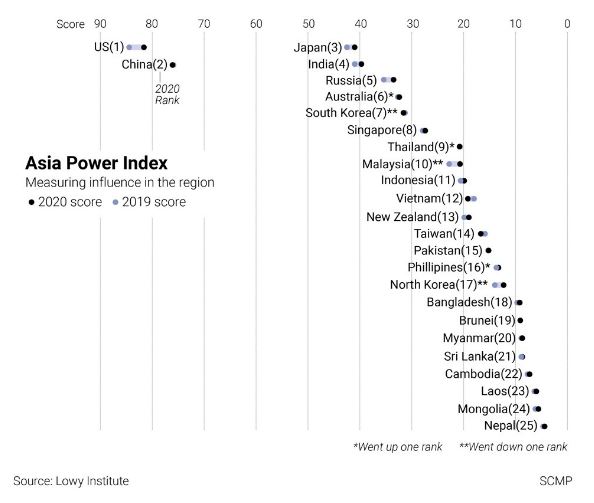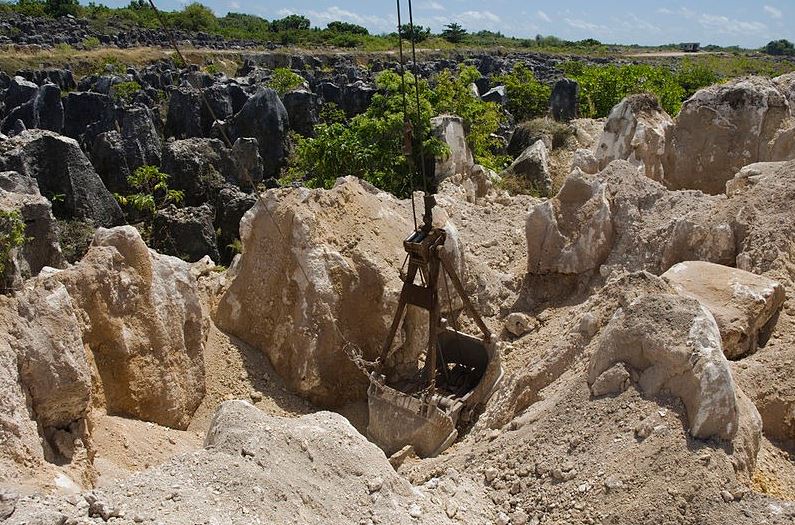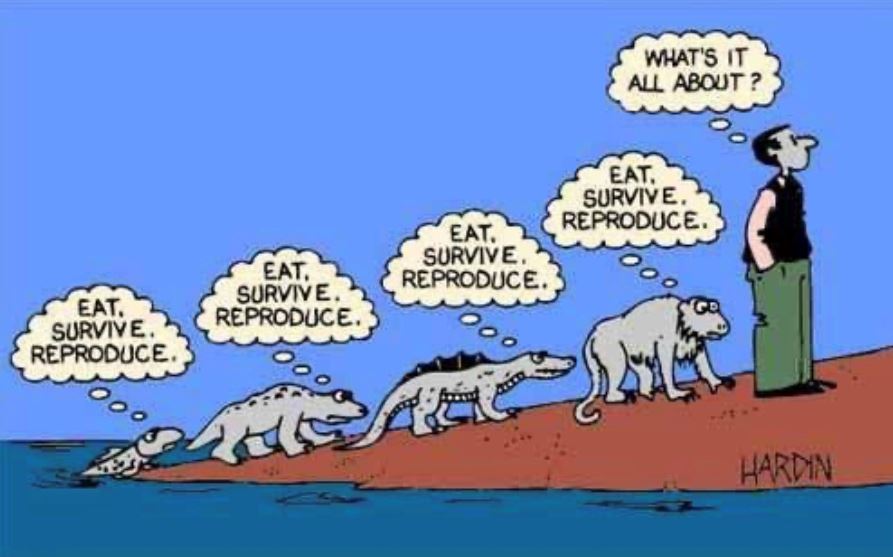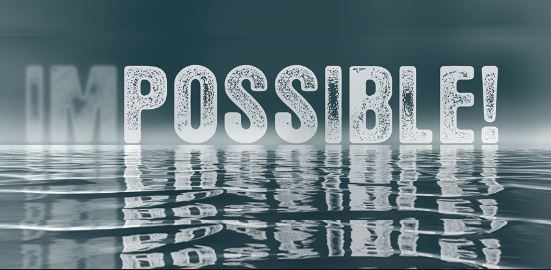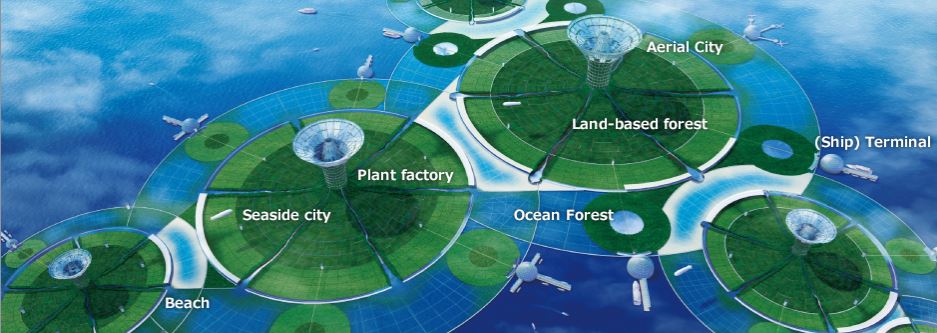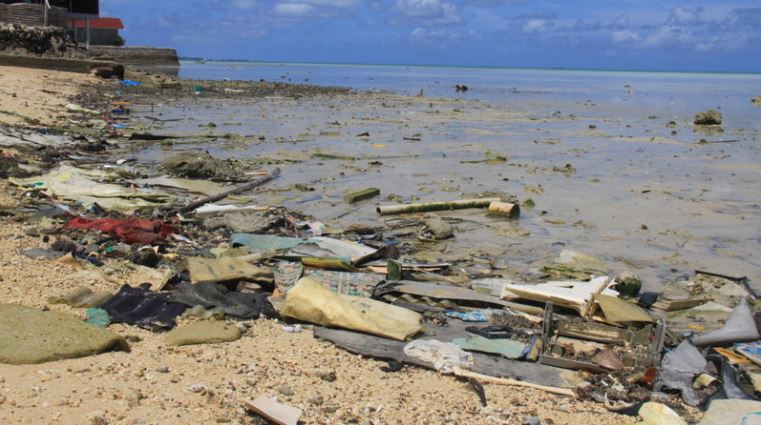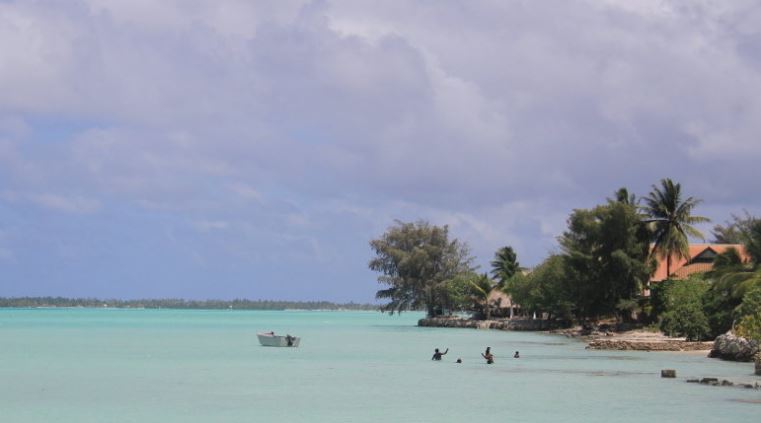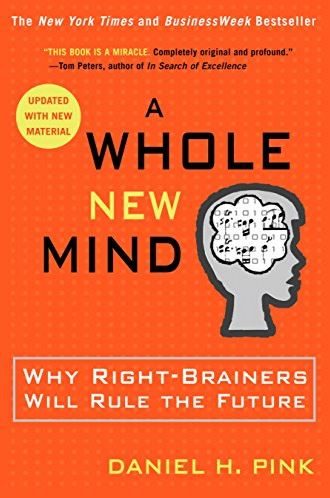
A Whole New Mind: Why Right-Brainers Will Rule The Future (2005) is not a new book. It has been circulated for nearly two decades. It came to my attention just recently while I was looking for a way out of my longest self-imposed confinement due to COVID-19. In this New York Times bestseller, the author, Daniel H. Pink, made a bold prediction at the time that “The future belongs to a very different kind of person with a very different kind of mind—creators and empathizers, pattern recognizers, and meaning makers. These people—artists, inventors, designers, storytellers, caregivers, consolers, big picture thinkers—will now reap society’s richest rewards and share its greatest joys.”
Living in a pandemic-laden beginning of the year of 2021, sixteen years after the book was first published and after crises unfolded one after another last year, only fools will still be in denial that we are very remote from Pink’s world of “high concept and high touch.” That is, in Pink’s words, “we’ve progressed from a society of farmers to a society of factory workers to a society of knowledge workers. And now we’re progressing yet again—to a society of creators and empathizers, of pattern recognizers and meaning makers.”
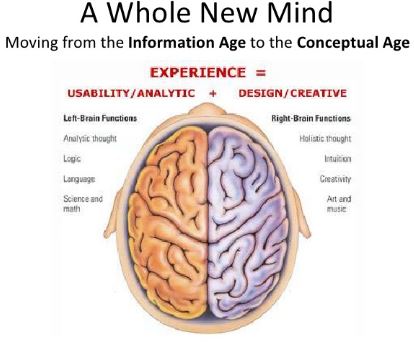
Our brain’s two hemispheres function differently—if you’re mostly analytical and methodical in your thinking, you’re said to be left-brained. If you tend to be more creative or artistic, you’re thought to be right-brained. Language is what separates man from beast. It is worth noting that language resides on the left side of the brain. In Western languages, reading and writing involve turning from left to right, and therefore exercise the brain’s left hemisphere (Pink, p.18). However, scientists have found that tonal languages use both sides of the brain. A recent study shows in Chinese speech comprehension there are neural dynamics between the left and right hemispheres in the brain. I can verify this finding as my former English linguistic professor in China used to tell us in his first class that Chinese people who actively use English will have both halves of an active brain, showing an advantage against an English native who speaks no other foreign language.
I have no doubt that the future leaders will be bilingual or multilingual. These leaders are likely to be empathizers and meaning makers naturally because empathy and active listening enable a polyglot to acquire a mastery of several languages. At the same time, he or she will obtain information first hand without the sole dependence on AI translation. Some unique meanings may be lost in translation. If you are interested in tapping into tonal languages to stimulate both hemispheres of your brain, in addition to Mandarin Chinese, you may try Norwegian, Cantonese, Japanese, Vietnamese, Filipino, Swedish, Ancient Greek, just to name a few.
To survive in this age, Pink suggested individuals and organizations must examine themselves with these three questions:
1) Can someone overseas do it cheaper?
2) Can a computer do it faster?
3) Is what I’m offering in demand in an age of abundance?
Well said. Every decision that we will make is directly or indirectly related to cost, ingenuity, and external acceptance—indirectly, effect as in the equation of cost and effect.
For instance, in 2021 any family which has at least one unemployed adult must be worried about family expenses in order to make ends meet. What will be the new alternative or substitute for the goods and services that are scarce? How to connect with the outside world when we are trapped at home? Look, John Doe is spending days on the computer to hunt for jobs and Little Jonny is also spending a few hours daily on the screen to interact with his teachers and schoolmates. Will their future be a gain rather than a loss in the digital age?
For traditional companies, when business may not return to a pre-pandemic normal, the cost issue is a headache to business owners. To keep the employees on their payrolls or downsizing, neither option is an easy one. Investments in developing countries or in exponential technologies such as data science and AI have a brighter silver lining than returning to traditional business practices. But who dares to invest when money is tight for many small business owners? Nevertheless, China’s full speed in development of exponential technologies might bring down the cost and shorten the R&D time. As Pink wrote in his book, “Now, as the forces of Abundance, Asia, and Automation deepen and intensify, the curtain is rising on Act III. Call this act the Conceptual Age. The main characters now are the creator and the empathizer, whose distinctive ability is mastery of R-Directed Thinking.”
For new graduates of Class of 2020, you happen to be in the frigid winter of a job market in the Conceptual Age. According to the U.S. Department of Labor, the lowest (3.5%) and the highest (14.7%) unemployment rates in the U.S. in the last 50 years (since 1970) both occurred in 2020, and they took place just two months apart. Yikes!
In 2021, every job seeker is competing with not only another human being vying for the same position, but also the machines which are “hired” to scan the resumes and filter out the bad apples automatically. This preliminary selection mechanism is designed by left-brainers who are supposedly quantitative, objective and rational. Programmers are thought to be analytical experts of manipulating data to the preference of the recruiters. But who knows? The right-brainers might break the norm and crack the code with creativity.
Today, waiting for humans’ responses has become longer to non-existent while the machines respond instantly in various human voices. In job seeking, can you be the outstanding one that a machine cannot understand and the human handler is eager to know more about? If you’ve discovered the potential of your right brain, you might find your place in today’s isolated and indifferent world, which is imbued with social distancing, e-commerce and teleconferencing.
Keep Calm and Be Patient With Humans. This is this right-brainer’s manifesto in 2021.
In his book, Pink introduced us to “the six senses”—the six essential aptitudes on which professional success and personal satisfaction increasingly will depend. They are:
DESIGN. STORY. SYMPHONY. EMPATHY. PLAY. MEANING.
After a year’s magical thinking, this right-brainer believes she has acquired at least five out of six senses—story, symphony, empathy, play and meaning. Among them, she’d like to dwell on meaning a bit as it has become part of her soul searching. Pink highlighted Viktor Frankl’s psychotherapy in his interpretation about the sense of meaning. Pink wrote, “Our fundamental drive, the motivational engine that powers human existence, is the pursuit of meaning.” He quoted Viktor Frankl, author of Man’s Search for Meaning (1946) in which the Austrian Holocaust survivor chronicled his experiences as a prisoner in Nazi concentration camps during World War II. It read:
“Live as if you were living for the second time and had acted as wrongly the first time as you are about to act now.”
Frankl’s psychotherapy in search of the purpose in life struck a chord with me. I’m elated that this quote verifies my Eureka Moment two years ago. It was Arthur Rimbaud, Wolfgang Amadeus Mozart and Vincent van Gogh who guided me to live for the second time. My eternal shoutout to them. The right-brainer solidarity. Well, in 2021 when we cannot make sense of the chaos based on our logic and established theories, we will need the right-brainer solidarity more than ever before.
From Pink to Play to Pablo Neruda
Partly thanks to social distancing due to the pandemic, I spend more time with my collection of original motion picture soundtracks (OST). I’d say listening to music is equivalent to the sense of play mentioned in A Whole New Mind. By listening to music, a listener acquires “various playful habits of mind that underlie invention.” The film score of Il Postino: The Postman (1994) led me to a great film for the literati. If you wonder how a metaphor works in language or in poetry, then this comedy-drama film is the primer. I’d imagine the original screenplay in Italian is very comical as I had chuckled and laughed with the help of subtitles. Check out these fun lines surrounding metaphors. In the movie, the Nobel Laureate in Literature Pablo Neruda was the muse of the fictional character, a postman named Mario Ruoppolo. Mario wanted to use his newfound love of poetry to woo local beauty Beatrice, the niece of the local innkeeper on a scenic island off Sicily. In reality, Pablo Neruda was a testament to Chile’s legacy as the land of poets. If the English translation of his Spanish poems is as beautiful as the original version, we will need to return to the original version in search of the beauty of linguistic sound in poetry. Pablo Neruda has left a trove of treasures for right-brainers around the world. Shouldn’t we compose an ode titled “Salute to Pablo Neruda”?
Poetry | La Poesía (1964) By Pablo Neruda (Text:move the scroll bar to the right | Spanish Audio) And it was at that age…Poetry arrived Y fue a esa edad… Llegó la poesía in search of me. I don’t know, I don’t know where a buscarme. No sé, no sé de dónde it came from, from winter or a river. salió, de invierno o río. I don’t know how or when, No sé cómo ni cuándo, no, they were not voices, they were not no, no eran voces, no eran words, nor silence, palabras, ni silencio, but from a street I was summoned, pero desde una calle me llamaba, from the branches of night, desde las ramas de la noche, abruptly from the others, de pronto entre los otros, among violent fires entre fuegos violentos or returning alone, o regresando solo, there I was without a face allí estaba sin rostro and it touched me. y me tocaba. I did not know what to say, my mouth Yo no sabía qué decir, mi boca had no way no sabía with names nombrar, my eyes were blind, mis ojos eran ciegos, and something started in my soul, y algo golpeaba en mi alma, fever or forgotten wings, fiebre o alas perdidas, and I made my own way, y me fui haciendo solo, deciphering descifrando that fire aquella quemadura, and I wrote the first faint line, y escribí la primera línea vaga, faint, without substance, pure vaga, sin cuerpo, pura nonsense, tontería, pure wisdom pura sabiduría of someone who knows nothing, del que no sabe nada, and suddenly I saw y vi de pronto the heavens el cielo unfastened desgranado and open, y abierto, planets, planetas, palpitating plantations, plantaciones palpitantes, shadow perforated, la sombra perforada, riddled acribillada with arrows, fire and flowers, por flechas, fuego y flores, the winding night, the universe. la noche arrolladora, el universo. And I, infinitesimal being, Y yo, mínimo ser, drunk with the great starry ebrio del gran vacío void, constelado, likeness, image of a semejanza, a imagen mystery, del misterio, I felt myself a pure part me sentí parte pura of the abyss, del abismo, I wheeled with the stars, rodé con las estrellas, my heart broke loose on the wind. mi corazón se desató en el viento.
It is not uncommon that since the invention and popularity of GIF memes, emoji and other ideograms, words and punctuation have been replaced by ideograms easily in our instant messages. I can’t help thinking of the third question posed by the author in A Whole New Mind. Is what I’m offering in demand in an age of abundance? What if our take-for-granted communication which is conveyed through words and sounds is transformed into graphics and ideograms instead? Are we going forward to the Conceptual Age or going backward to the Stone Age?
(The Trio version sounds as if three different personas represented by three different music instruments are talking to one another. Composed by Luis Bacalov, the OST of Il Postino won the 68th Academy Award for Best Original Dramatic Score (1995) and the BAFTA Award for Best Film Music.)
“Poetry doesn’t belong to those who write it; it belongs to those who need it.”
—Mario Ruoppolo, Il Postino: The Postman (1994)
P.S. In the dawn of this right-brainer’s awakening hour, she experimented with the six senses suggested in A Whole New Mind and wrote a poem to mark the occasion. Listen. Learn. And Create. 2021 can be fun and adventurous.
Reactivation
by Karen Zhang | Jan 2021
You came back into my life
on one winter night when
I was fumbling through
those old files,
my Chinese linkage, and
your old cellphone—
I felt as if we were two living spirits
beckoning across a massive web
between reality and virtuality
in the same eon.
Your sweet slumber was imbued with a forlorn calling.
You were beseeching me to reactivate
a locked diary,
a forgotten tune,
an untold tale,
an unfinished dialogue about the living and
about us.
I heard you,
I sensed you,
I wept for you,
I reactived your WeChat account—
I have opened a door
for us—
Just the two of us.
How sweet!
Let it be the way it is—
Forget the time, the space, and
tonight can you hear my nostalgic tune?
Our past is again
reactivated.


